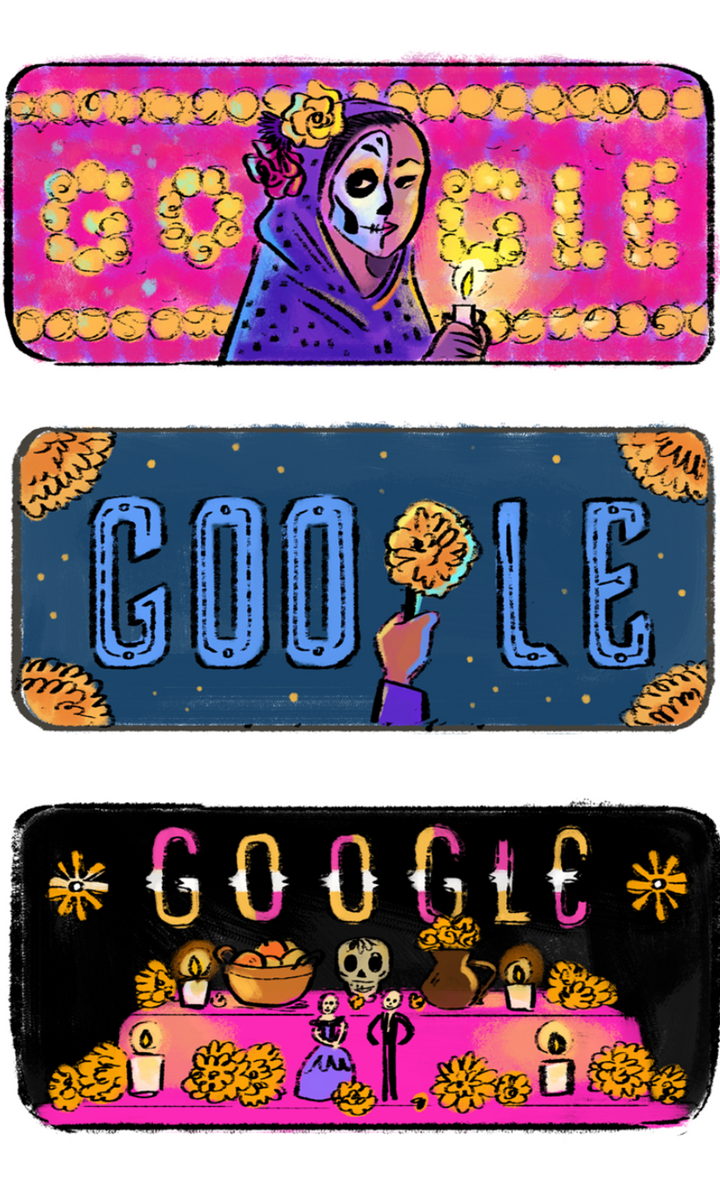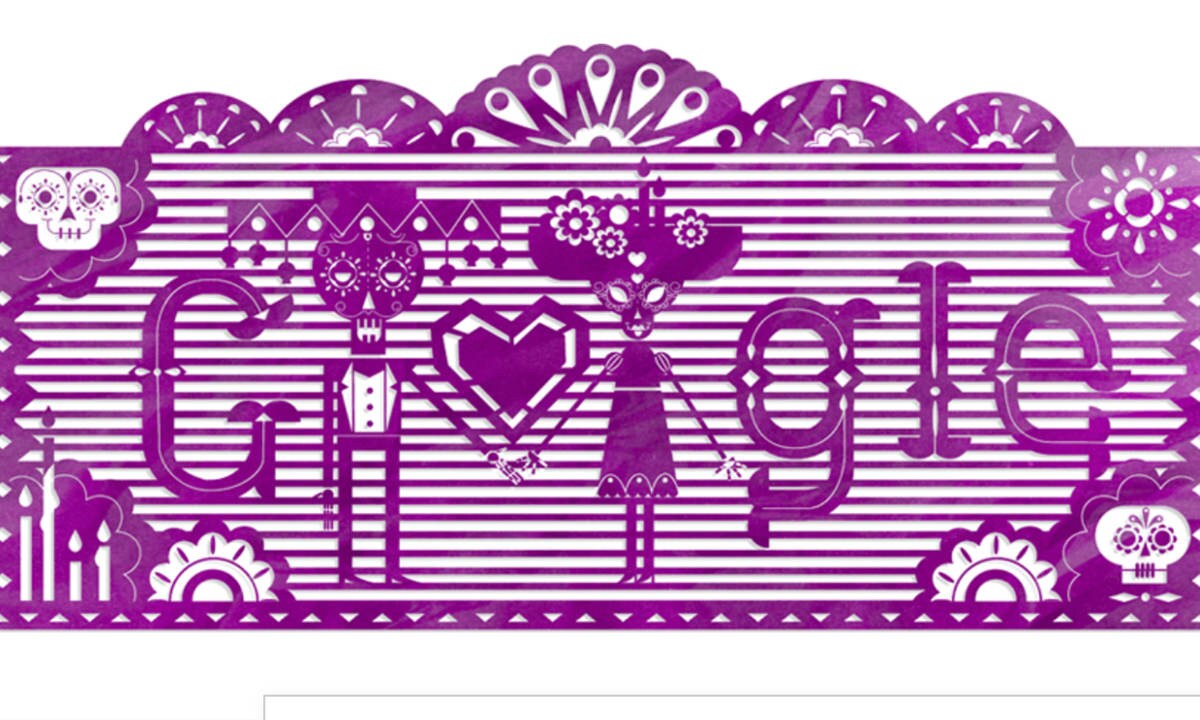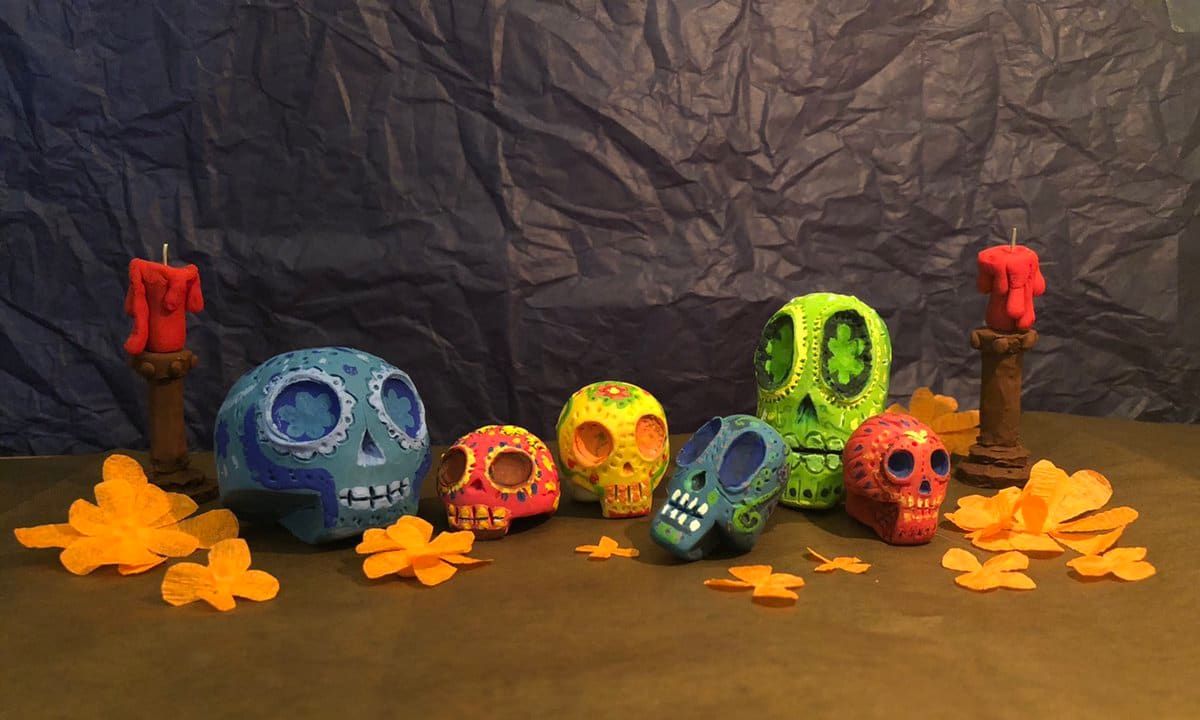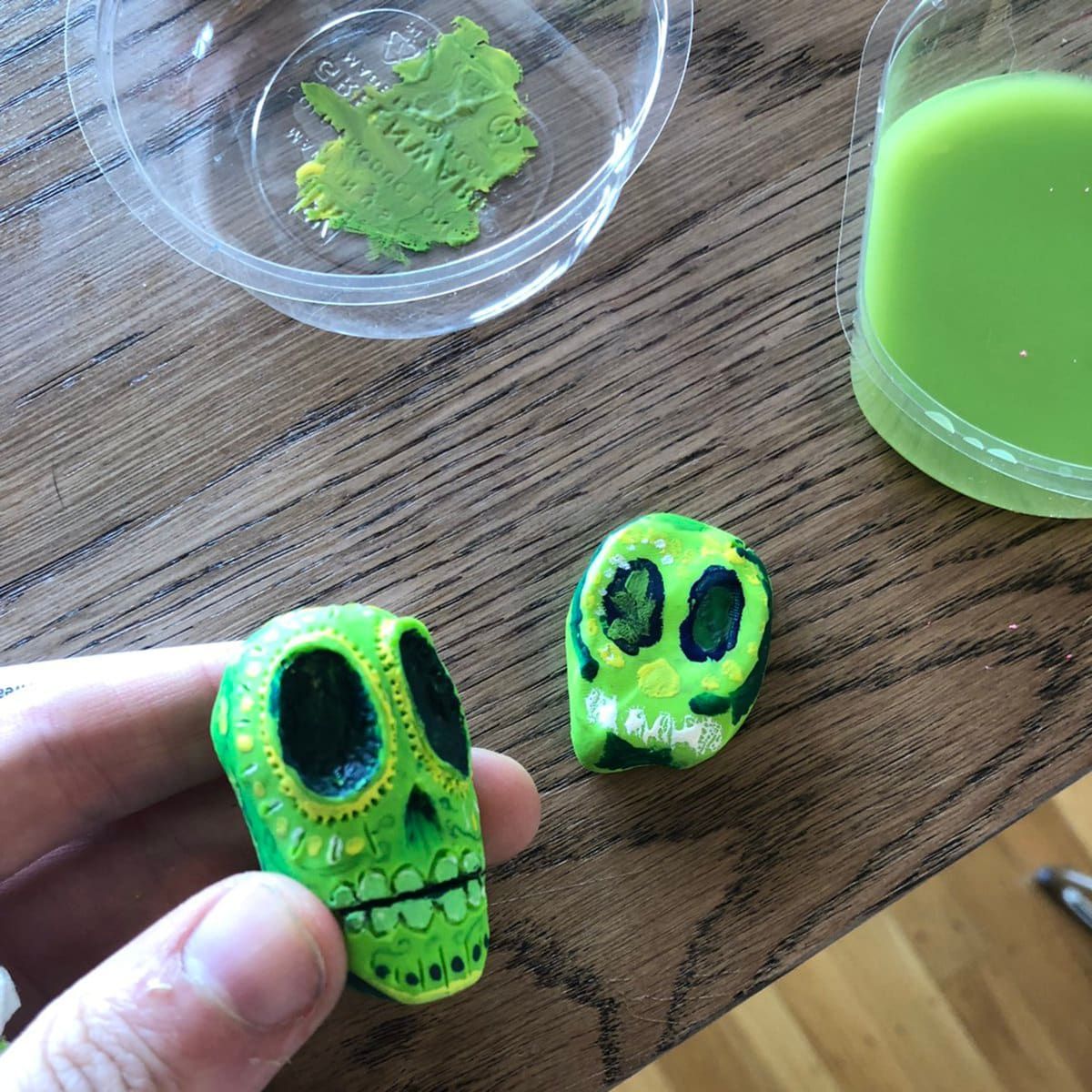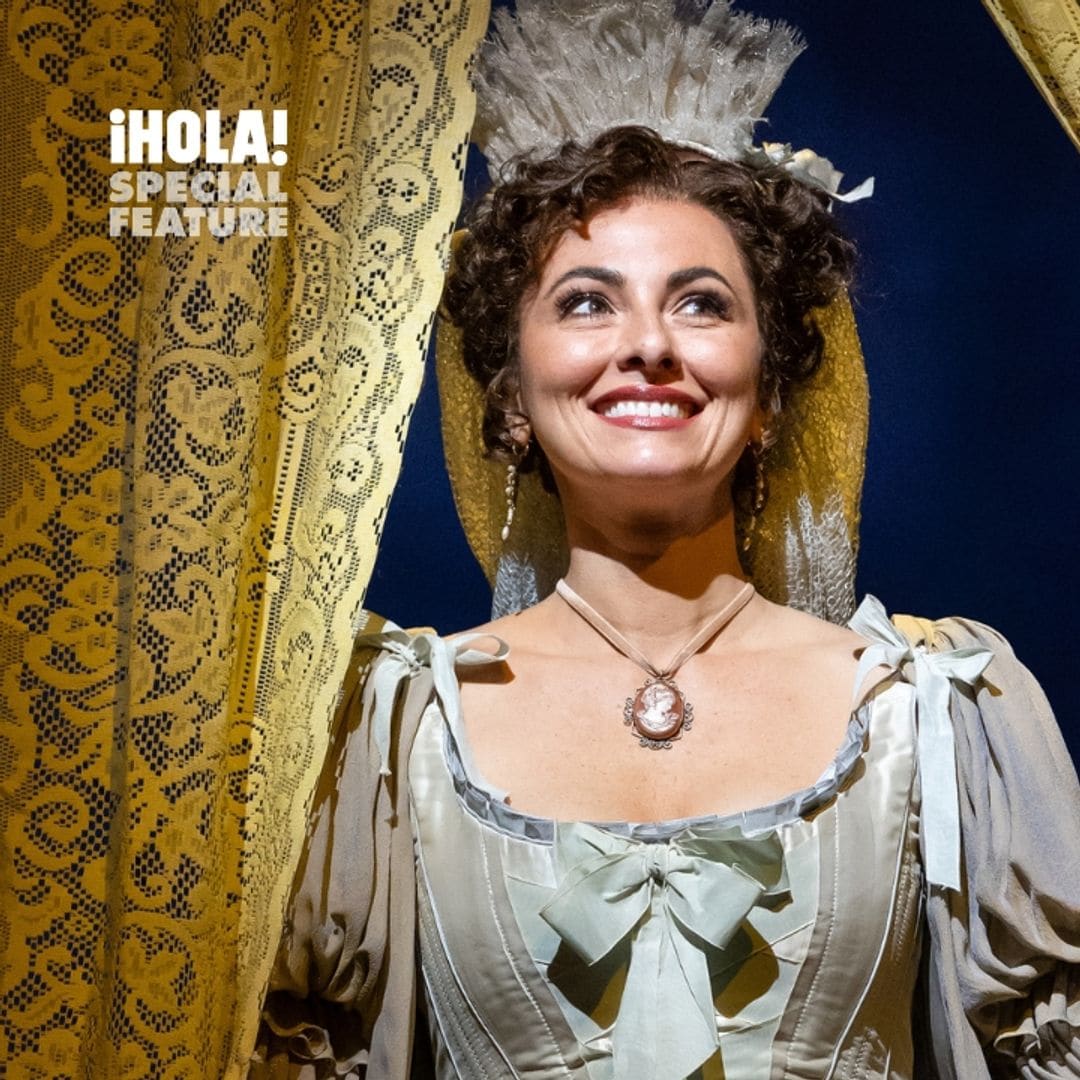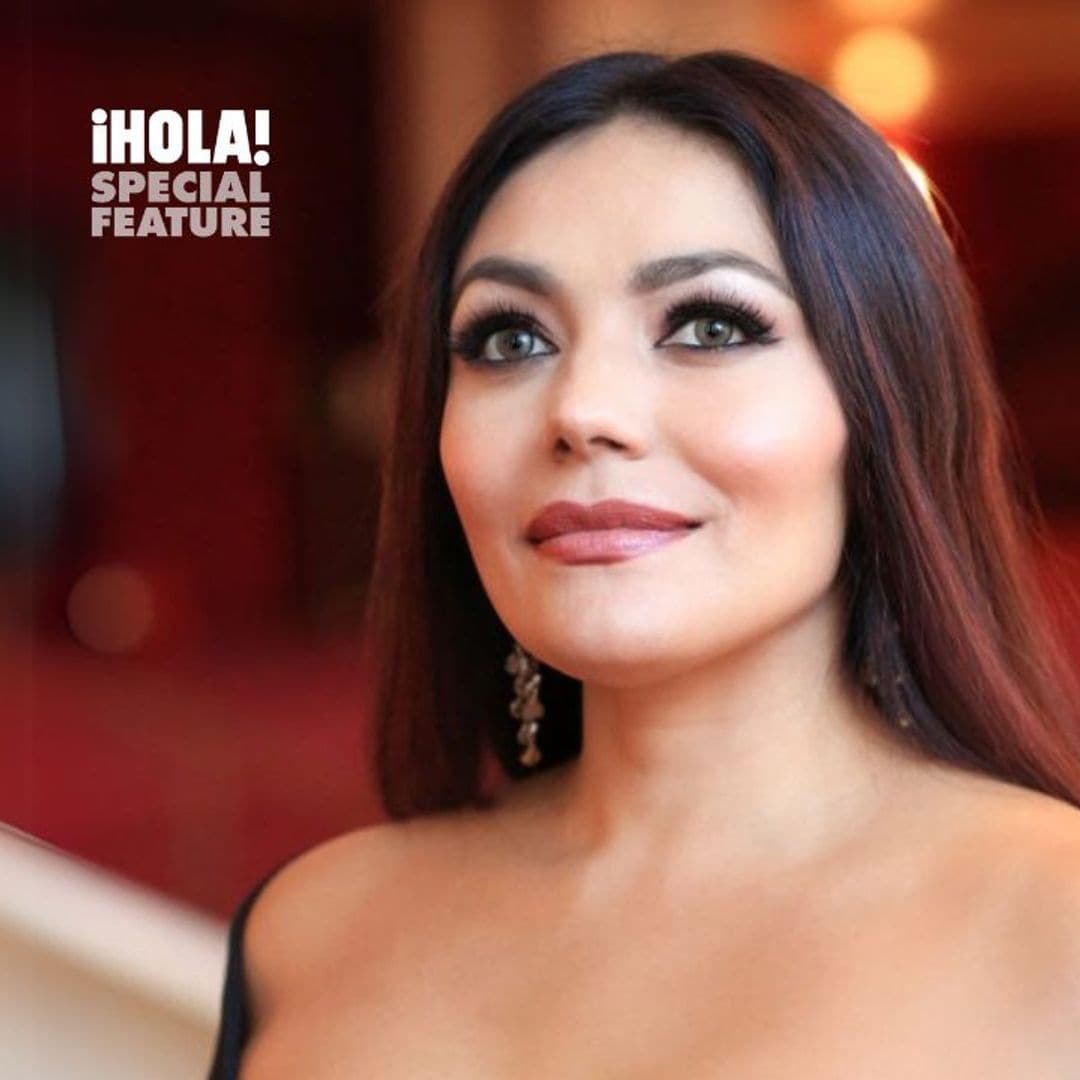Google temporarily altered its iconic and worldwide-known homepage logo to commemorate Mexico’s annual Día de Muertos (Day of the Dead). A legendary Catholic holiday (November 1 and November 2) involving prayers, ofrendas, parades, cookouts, and more, to celebrate and remember the loved ones that had passed away.
The doodle was designed by Sophie Diao, an illustrator and visual developer that has been working closely with the company since 2013. This year, Diao, who describes herself as a left-handed artist living in San Francisco, California, created three options to honor the holiday. The illustrations feature the most recognizable and characteristic elements of the celebration; the orange Mexican marigolds (Tagetes erecta) called cempasúchil or Flor de Muerto (Flower of Dead), scores of candles, food, and catrinas (skulls).
The displayed logo shows the cempasúchil as a decorative element and as a replacement of the letter G, while the other early concepts of the Doodle reveal an ofrenda, which is an altar that families build for their departed loved ones containing all the favorite foods and beverages the person used to love, plus photos and memorabilia that belonged to the departed. A catrina, a common symbol of the holiday, is also the star in one of the proposed logos.
For years, Google Doodle has been honoring the beloved celebration. In 2016, they transformed the logo into papel picado, a technique known for its intricate cutouts on colorful tissue paper. The decorative craft is considered Mexican folk art and has been part of the Mexican celebrations since the 18th century. According to the multinational technology company, the “delicate paper banners indicate that life is fragile and fleeting, but it‘s also full of beauty and delight.”
In 2018, the Doodle was handcrafted by Nate Swinehart out of clay. The beautiful creation included candles, marigold flowers, papel picado, and colorful calacas.
In Mexico, the holiday is considered a national symbol; therefore, in 2008, a committee requested to UNESCO the adoption of an agenda to declare the tradition an Intangible Cultural Heritage of Humanity.
,type=downsize)

